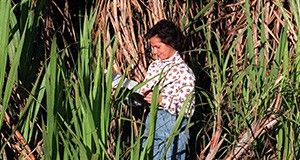
Sands used in sugarcane production in Florida have low levels of organic matter, silt, and clay, and they provide little N through mineralization of organic matter and possess a low capacity for N retention as a result. Because these soils are highly leachable, N must be managed well to ensure adequate nutrition for the crop as well as protection of groundwater. This new 4-page fact sheet is part of the Sugarcane Handbook, and it discusses sand soils used in sugarcane production, sugar yield response to nitrogen, and revised nitrogen recommendations. Written by J. Mabry McCray, Kelly T. Morgan, and Les Baucum, and published by the UF Agronomy Department, February 2016.
http://edis.ifas.ufl.edu/sc101